In 2006, manga-ka writer Tsugumi Obha and illustrator Takeshi Obata worked with editor Koji Yoshida to create Death Note. To say that Death Note is one of the most popular manga and anime series on earth would be an understatement, as its story has been retold several times.
In Death Note, a high school student, Light Yagami, finds a black notebook called the Death Note. The inside cover includes various rules on how to cause death to others by picturing a person’s face and writing their name. Within seven seconds, the names written in the book will die of a heart attack unless the user wants to inflict a certain cause of death.
After Light uses the notebook, a Shinigami named Ryuk explains what the Death Note is and what will happen to him if he uses it. Kira wants to use the Death Note to kill criminals and sees himself as a “God of Justice,” but L and the rest of the Kira task force don’t see him that way.
In fact, they see Kira as a cold-blooded murderer and will stop at nothing to apprehend him. In this article, I’ll explore the origins of Death Note, its main story, and the rest of the canon.
Making the Manga: The Creation of Death Note
Manga-ka writer Tsugumi Obha is notoriously secretive with their life to the point that most people don’t know what they look like, their gender, or if they’re an actual person. What the Death Note fan community does know about Obha and the creation of Death Note will be included, but there isn’t much. However, Obha likes to talk about their creative process.
Tsugumi Obha wanted to make a suspense series because they didn’t want to create a typical Shonen story. Obha also said they didn’t derive the Death Note concept from a single source but thought about a story that included Shinigami (or Death Gods) and specific rules.
Obha didn’t expect Shonen Jump to approve a serialized comic but was happy to hear that Takeshi Obata would continue to create artwork for the series.
Takeshi Obata only met Tsugumi Obha a few times during serialization, so they two would send writing or illustration drafts to their editor Koji Yoshida. Onba would create “thumbnails,” including the panel layout, dialog, and basic drawings before sending it to Obata, where Yoshida would review the thumbnails. When Obata received the thumbnails, panels were mostly done.
When creating the character designs, Obata would use Obha’s dialog and general vibes they gave off. When submitting the first chapter with a new character, Obha would rarely change their designs and, when they did, it was to add small details that Obata still needed to sign off on.
Obha said that the ending was more or less in a way they intended. To research hefty police topics, they used the Internet for research and didn’t go on any research trips.
Death Note Manga Pilot (Non-Canon)
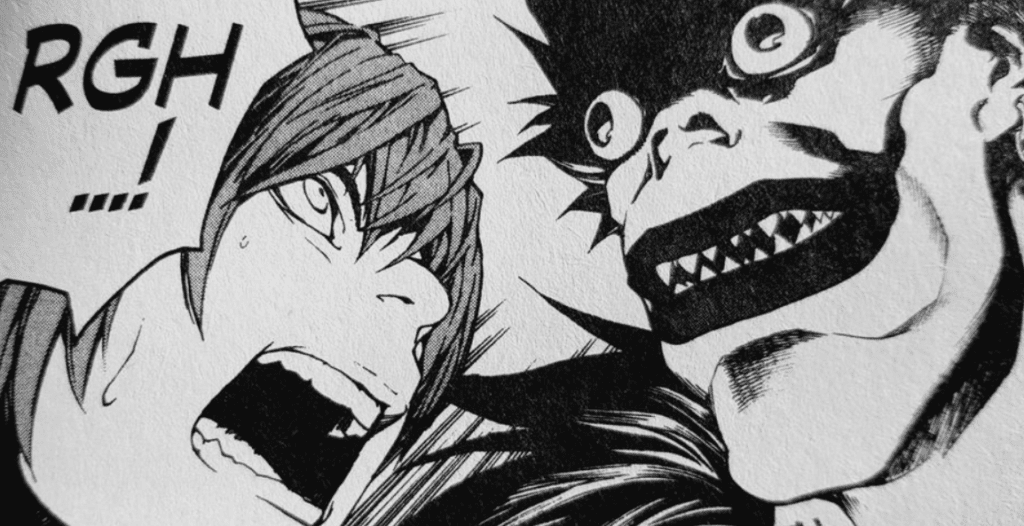
Manga Release: August 4th, 2003
Manga Original Run: Weekly Shonen Jump, August 4th, 2003
Re-release: Death Note 13: How to Read, October 13th, 2006, Death Note – Omega Edition Blu-Ray, March 1st, 2016, Death Note: Short Stories, February 4, 2021
Chapters: 1, 55 pages
Spoilers Below
The original pilot chapter centers around Taro, a 13-year old boy who mistakes the Death Note for a regular notebook and accidentally kills the people he writes in the book. Ryuk appears and erases these names. However, another boy, Miura, uses the same Death Note to kill criminals. The two erase the names of their victims and confess their crimes to the police.
The pilot chapter differs from the manga series in that the Death Note includes a rule about the Death Eraser, which brings victims back to life if they haven’t been cremated.
Note: Although the Death Note Manga Pilot does take place before the Death Note Manga, Anime, or Another Note, it isn’t considered canon with the reinvented series. However, it’s still a major part of Death Note history and takes several of its ideas into the main story.
Death Note Overview: Manga Timeline
The manga uses different years, but not different months. For example, the birth of Kira in the manga takes place in November 2003, not 2006. It’s likely that the anime takes place in 2006 to make the story exist in the modern era, as the Death Note anime’s original run began in 2006.
Spoilers Below
November 2003: Birth of Kira
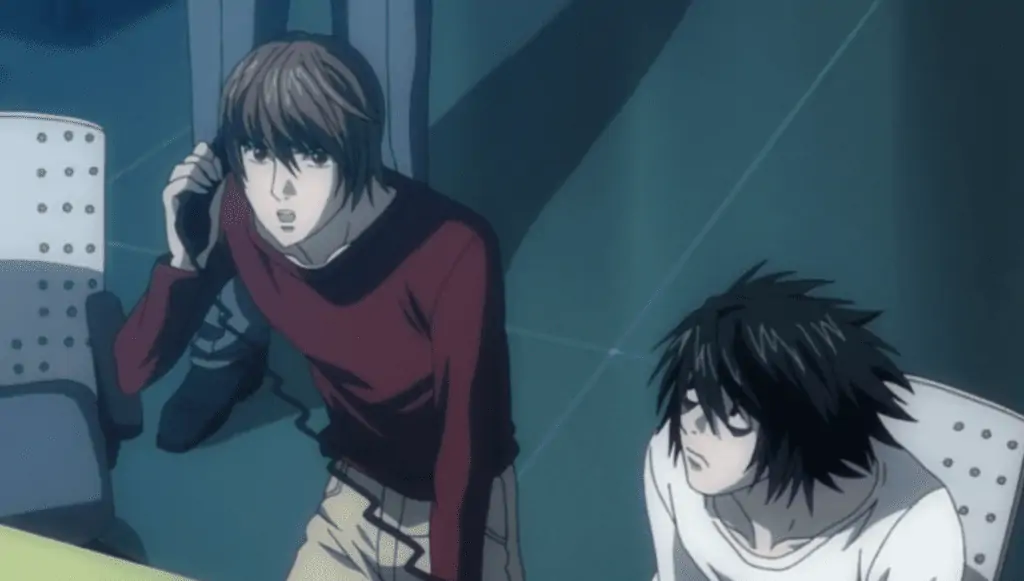
November 28th, 2003 (Part 1): Ryuk, a shinigami, drops the Death Note in the human world.
November 28th, 2003 (Part 2): Light Yagami finds the Death Note and kills 2 people.
November 28th-December 3rd, 2003: Light Yagami’s killing spree.
December 2003: Preliminary Investigation
December 3rd, 2003: Light Yagami meets Ryuk.
December 4th-10th, 2003: Kira continues to kill.
December 10th, 2003 (Part 1): I.C.P.O. meeting where L is asked to join the case.
December 10th, 2003 (Part 2): L uses Lind L. Tailor to lure Kira out.
December 11th-12th 2003: Kira changes up his killing pattern to only kill once every hour.
December 13th, 2003: L knows that Kira can set a time of death.
December 14th, 2003: L sends FBI agents to enter Japan to trail the Kanto police department.
December 15th-19th, 2003: Ryuk tells Kira the FBI is tailing him and his family.
December 20th, 2003: Raye Penber and the bus hijacking incident.
December 27th, 2003: Kira tells Pender to write 12 FBI agents in the Death Note and kills him.
December 28th, 2003: L receives the last Kira note Kira has sent throughout December.
December 31st, 2003: The Japanese Kira task force is reduced to 6 members.
January 2004: Surveillance and First Meeting
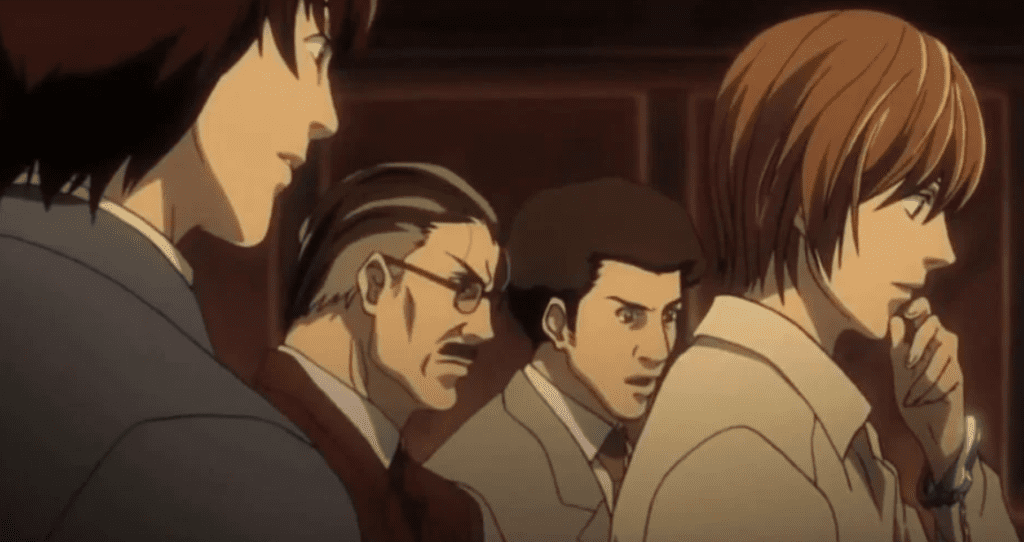
January 1st, 2004 (Part 1): The Kira task force meets L and Watari.
January 1st, 2004 (Part 2): Naomi Misora is killed by Kira.
January 5th-8th, 2004: L learns Naomi Misora is missing and puts cameras in Yagami’s house.
January 8th, 2004: Light figures out there are cameras in his room and his horse.
January 9th-11th, 2004: Kira continues to kill criminals from small TVs/radios.
January 12th, 2004: L concludes there’s “no suspicious activity” at the Yagami household.
January 12th-17th, 2004: Cameras are removed from the Yagami household.
January 17th, 2004: Yagami begins his Standard University Exam. He sees L in the room.
January 18th-19th, 2004: L reveals himself to Light as “L.”
January 19th, 2004: Light and L compete in a tennis match to “get to know each other better.”
January 20th, 2004: Soichiro Yagami collapses due to stress and exhaustion.
April 2004: Second Kira
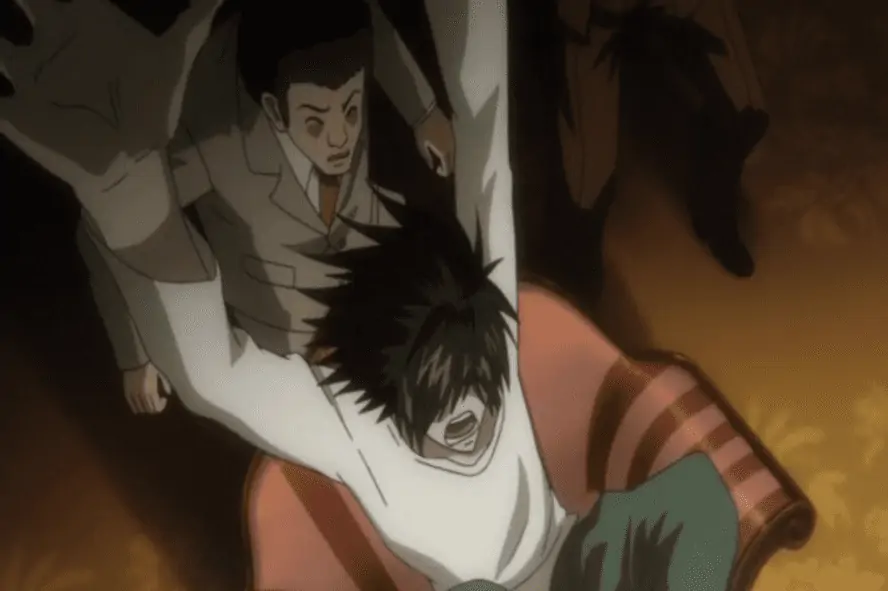
April 18th, 2004: Sakura TV airs the 2nd Kira’s tapes; Hirokazu Ukita is killed by the 2nd Kira.
April 19th-April 22nd 2004: L reviews the tapes. The task says no to Kira’s demands.
April 22nd, 2004: 2nd Kira responds and threatens L to appear on live television in 4 days.
April 23rd, 2004: Authorities demand that L appears on TV; L knows there’s a 2nd Kira.
May 2004: Two Kiras
May 19th, 2004: Light joins the task force, and L asks him to message the 2nd Kira.
May 21st, 2004: The 2nd Kira responds and wants to meet up with Kira.
May 22nd, 2004: The 2nd Kira (Misa) sees Light in Aoyama and knows he’s Kira.
May 23rd, 2004: Misa responds to Sakura TV to say she’s met Kira.
May 25th, 2004 (Part 1): L receives a message that the 2nd Kira and Kira have met.
May 25th, 2004 (Part 2): Misa arrives at Light’s house and tells Light she’s Kira.
May 26th, 2004: Light tells his sister, Sayu, to keep Misa as his girlfriend a secret.
May 27th, 2004 (Part 1): Kanzo Mogi learns Light is dating Kiyomi Takada.
May 27th, 2004 (Part 2): The final 2nd Kira message states that they’ve joined forces with Kira.
May 27th, 2004 (Part 3): Kira and Misa discuss the possibility of Rem killing L.
May 28th, 2004: Misa goes to Light’s college but is detained before revealing his name to Light.
June 2004: 2nd and 3rd Kira
June 1st, 2004 (Part 1): Misa loses the Death Note memories.
June 1st, 2004 (Part 2): Light volunteers for confinement, Soichirou volunteers afterward.
June 9th, 2004: Light loses the Death Note’s memories in prison.
June 15th, 2004: Yotsuba’s Group Kyosuke Higuchi starts killing as Kira.
June 16th, 2004: L finds out the killings continue but doesn’t tell Light.
July 2004: Fake Execution
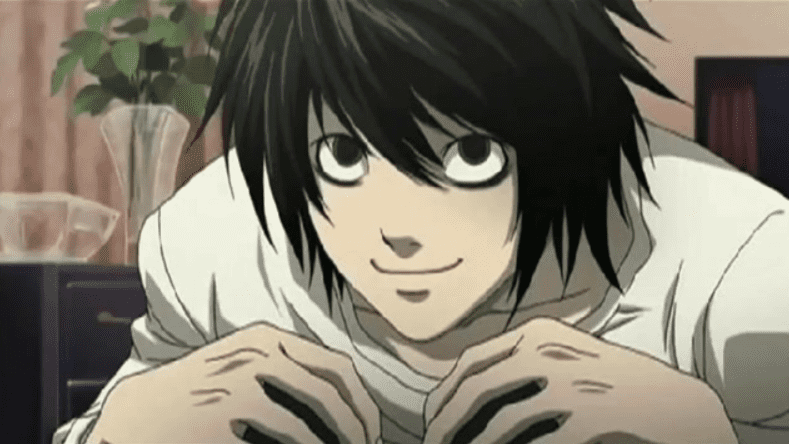
July 18th, 2004: L tells Soichirou his conclusions of the case.
July 21st, 2004: Fake execution of Light and Misa.
July-October 2004: Higuchi as Kira
July-October 2004: Higuchi continues to kill as Kira.
October 2004: Yotsuba Group Investigation
October 5th, 2004: L starts investigating Yotsuba. Shuichi Aizawa quits task force.
October 7th, 2004: Watari calls Aiber and Wedy.
October 10th, 2004 (Part 1): Wedy and Aiber meet the task force.
October 10th, 2004 (Part 2): Matsuda enters the Yotsuba building; overhears the meeting.
October 11th, 2004: Matsuda fakes his death; Aider contacts Kida of Yotsuba.
October 12th, 2004: Arayoshi Hatori in the Yotsuba meeting pulls out of the operation.
October 15th, 2004: At the Yotsuba meeting, Hatori is killed.
October 21st, 2004: Yotsuba calls Aiber and requests that he show himself.
October 22nd, 2004: Mogi becomes Misa’s manager.
October 24th, 2004 (Part 1): Misa is questioned by Yotsuba and Aiber as being Kira.
October 24th, 2004 (Part 2): Rem tells Misa that Light is Kira.
October 25th, 2004: Misa convinces Higuchi to stop killing for a time (to prove he’s Kira).
October 28th, 2004 (Part 1): Sakura TV announces they’ll reveal Kira’s identity.
October 28th, 2004 (Part 2): Higuchi is arrested’ Light recovers the Death Note’s memories.
October 28th, 2004 (Part 3): Higuchi dies before reaching the prison complex.
October 30th, 2004: Misa recovers her own Death Note memories.
November 2004-May 2005: Final Moments of Part 1
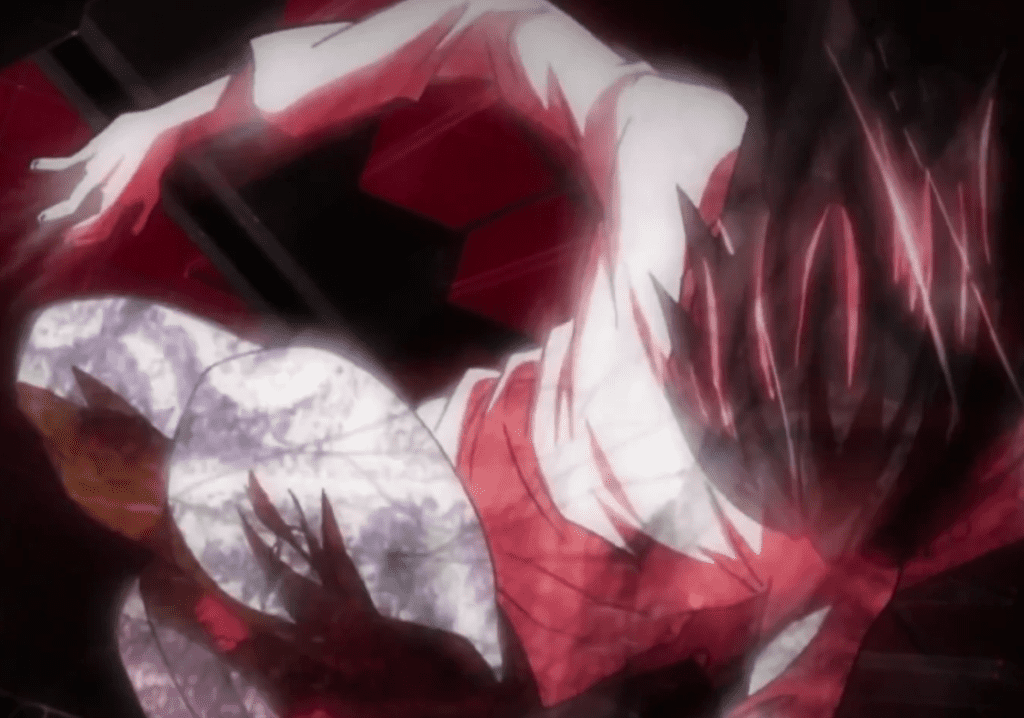
November 5th, 2004: L dies.
November 10th, 2004: The Kira task force makes Light the new L.
November 20th, 2004: Near and Mello discover L is dead.
January 10th, 2005: Wedy dies.
April 7th, 2005: Aiber dies.
April 10th, 2005: The last of the Yotsuba members die.
May 1st, 2005: Light, as L, asks the media to stop showing criminals’ faces.
May-October 2009: First Moments of Part 2
March 5th, 2009: Near meets with the President of the United States.
March 12th, 2009: The SPK (Special Provision for Kira) is created.
April 2009: Light Yagami, now age 23, enters the NPA (National Police Agency).
Summer 2009: Kira begins to kill much more than he used to.
October 2009: Mello, Near, and the SPK
October 15th, 2009: Mello kidnaps Director Takimura.
October 16th, 2009: Mello kidnaps Sayu Yagami.
October 17th, 2009: Near, going by N, contacts L for the first time over the phone.
October 18th, 2009: Mello receives the Death Note; Sayu is saved; SPK members die.
October 20th, 2009: Matsuda and Aizawa visit Wammy’s House.
October 21st, 2009: The President tells L he’s been threatened by kidnappers.
October 22nd, 2009: The President calls Commander Joe to attack Mello’s hideout.
October 26th, 2009 (Part 1): Syndar sends Misa mail; Mello’s hideout fails due to Sidoh.
October 26th, 2009 (Part 2): The President is killed by Kira
October 28th, 2009: Fake Kira contacts the task force requesting help with his notebook.
November 2009: Near and Obsolving the SPK
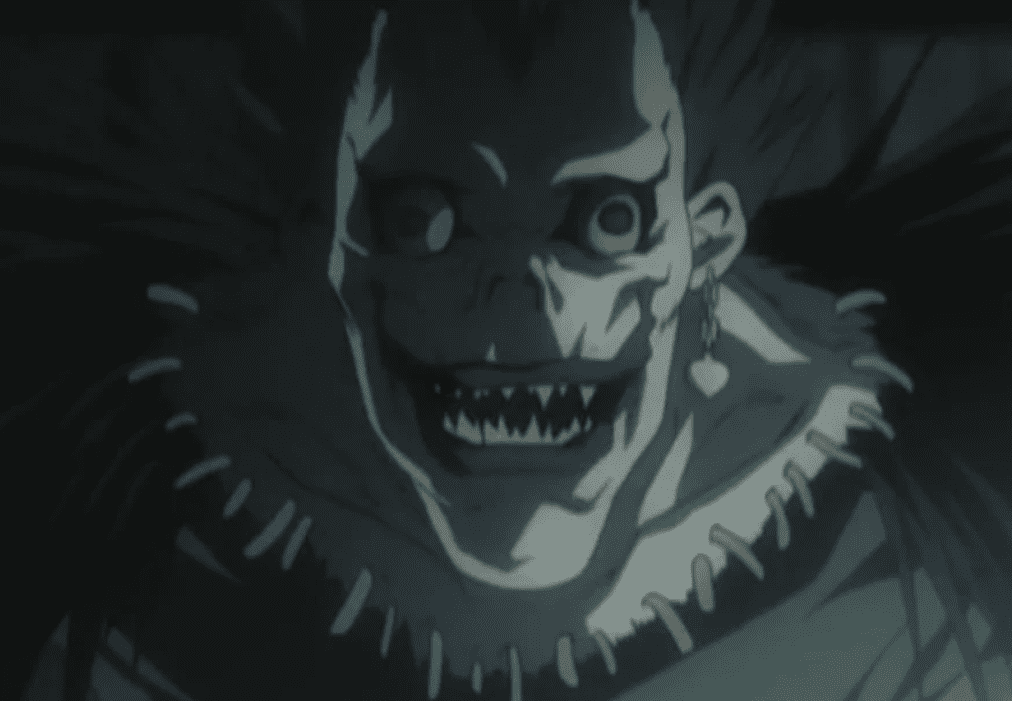
November 1st, 2009: Ryuk meets the task force.
November 7th, 2009: Taskforce finds Mello’s hideout.
November 10th, 2009: Soichiro Yagami dies while attacking Mello’s hideout.
November 17th, 2009: SPK is dissolved; Near knows L is Kira.
November 18th, 2009: SPK dissolvement is made public.
November 19th, 2009: Mello talks to Near; both kidnap Mogi.
November 21st, 2009: Kira’s followers and Demegawa find the location of SPK HQ.
November 22nd, 2009: SPK is transferred to a new location.
November 24th, 2009: Near tells Light Mogi is “dead,” Aizawa meets with Near.
November 26th, 2009: Demegawa is killed by X-Kira.
November 29th, 2009: Matt spies on task force members, Mello spies on Misa.
November 30th, 2009: Teru Mikami requests for Kira’s new orders.
December 2009: Takada and Misa’s Kidnapping
December 4th, 2009: Takada becomes new Kira’s spokesperson.
December 5th, 2009: Takada and Light secretly meet in person.
December 6th, 2009: Takada and Light meet again when X-Kira (Mikami) contacts Light.
December 17th, 2009: Takada asks Mikami for 5 sheets of Death Note paper.
December 22nd, 2009: Near discovers Teru Mikami is X-Kira.
December 23rd, 2009: Takada and Misa have dinner; Gevanni sees Mikami use the note.
December 24th, 2009: Takada and Light meet to discuss Misa.
January 2010: Final Month
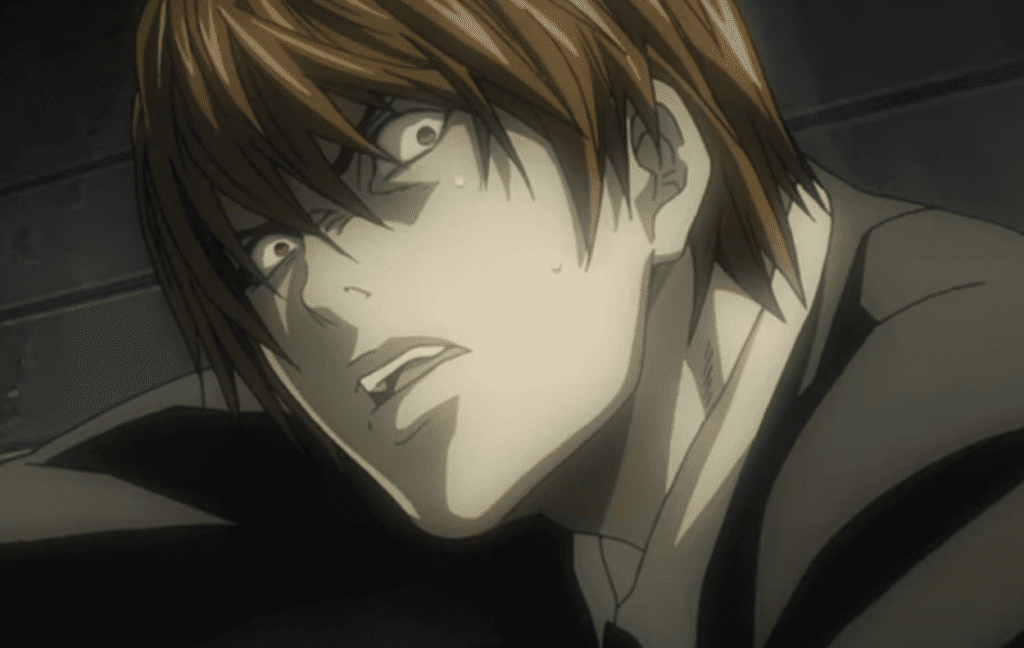
January 3rd, 2010: Tanaka and Light meet again.
January 6th, 2010: Gevanni talks to Near about Mikami.
January 7th, 2010: Near gets pictures of the pages of the Death Note.
January 22nd, 2010: Mikami’s note is switched for a fake by Gevanni.
January 23rd, 2010: Mikami tells Takada, “I’ve confirmed it.” Takada tells Light.
January 25th, 2010: Gevanni contacts Near; Near contacts L and asks to meet on the 28th.
January 26th, 2010: Takada’s kidnapped. Matt, Mello, and Takada are killed.
January 27th, 2010: Gevanni makes another duplicate of the Death Note and replaces it.
January 28th, 2010: Light and Near meet. Light is proven to be Kira. Light dies.
January 28th, 2011: Near is L, Aizawa is deputy director, Mr. Roger becomes Watari.
Note: Several events happen at different points in the manga than they do in the anime, or they happen off-screen in the anime and/or aren’t focused on due to plot conveniences.
Wedy and Aider’s deaths and the Yotsuba member’s deaths (occurring in 2005 in the manga or 2008 in the anime)are notable examples. In May 2008 (2005 in the manga), Light Yagami requested that the media refrain from showing criminals’ faces to prevent their deaths. Still, in the anime, that information isn’t directly discussed but assumed based on other hints.
Death Note: Canon Reading Order
To read/watch the story in order, not by publication date, follow this guide:
- L: The Wanny’s House and L: One Day
- Death Note Another Note: The Los Angeles BB Murder Cases
- Death Note Manga/Death Note Anime OR Death Note Relight Movies
- C-Kira Story
- a-Kira Story
Note: L: The Wanny’s House and L: One Day aren’t necessary, and if you want to read them legally, they can be difficult to find. You can skip these two side stories and not miss much.
Death Note: Cannon Story
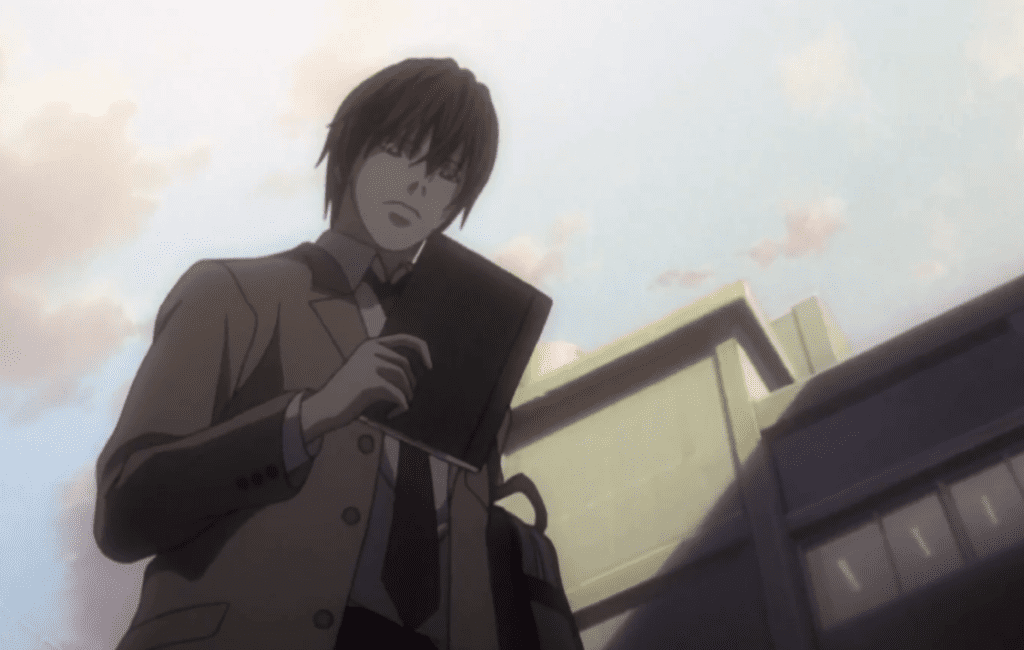
The following pieces of media are considered canon in the Death Note universe. Both the manga and the anime contain the same storyline with some notable distinctions.
Death Note Manga
Manga Release: Weekly Shonen Jump, December 1, 2003
Manga Original Run: December 1, 2003 – May 15th, 2006
Volumes: 12, 108 Chapters
The Death Note manga is licensed by Viz Media for North American distribution, but under Shueisha’s Weekly Shonen Jump in Japan. The chapter names were created after the thumbnail stage except for chapters 107 and 108, which occurred after this stage. Tsugumi Obha did their best to avoid spoilers in each chapter, and by chapter 7, they decided to have fun with it.
Although Obha decided to end the manga in 108 chapters, this became complicated when Kiyomi Takada was reintroduced into the story. Obha didn’t have enough time to create an epilogue, which is why they made the C-Kira story to tie up a few loose ends.
Death Note Anime
Anime Release: October 3rd, 2006
Anime Original Run: October 3rd, 2006 – June 26th, 2007
Episodes: 37
The anime series closely follows the original storyline of the first seven volumes of the manga but rushes through the Mello and Near arcs by accentuating the action scenes and skipping monologues. The order of facts is changed, and some additional scenes are featured.
One noticeable one is Kira finding L in the rain and attempting to comfort him. There’s also a Christ allegory when L dries off Kira’s feet after they both come in from the rain.
The anime’s director, Tetsuro Araki, tried to make the anime interesting by adding sweeping effects and exaggerations to otherwise mundane scenes in the manga. The anime was seen as “difficult to adapt” due to the lack of action scenes. Toshiki Inoue, the series organizer, stated the adaptation process as “definitely delicate and a great challenge.”
The anime changes the manga’s ending in a few notable ways. While in both cases Ryuk kills Light after Matsuda shoots him during the warehouse confrontation, anime Light actually runs away from the warehouse, bleeding to death, and doesn’t die immediately from the Death Note.
As he’s running, Light reflects on what he’s done and feels some degree of remorse. Before and after Light closes his eyes, Misa travels somewhere on a train. She eventually gets out, and there’s an assumption that she’s about to commit suicide by jumping, but it isn’t clear.
Death Note Relight 1: Visions of a God and Relight 2: L’s Successors
Relight 1 Anime Movie Release: August 31st, 2007
Relight 1 Anime Movie Original Run: Nippon TV, August 31st, 2007
Relight 1 Runtime: 130 minutes
Relight 2 Anime Movie Release: August 22nd, 2008
Relight 2 Anime Movie Original Run: Nippon TV, August 22nd, 2008
Relight 2 Runtime: 100 minutes
The series was later condensed into two films: Visions of a God, covering the first half of the story, and L’s Successors, covering the second half. The content was heavily revised to make the film feature-length, including the following in Visions of a God:
- The opening with Ryuk and another Shinigami is new for the film.
- A new scene where Light visits L’s grave.
- A new scene where L shows Light the 2nd Kira’s tape in a theatre.
- Reiji Namikawa’s death is depicted as a heart attack instead of a car crash.
In Relight 2, the OVA begins with L breaking the fourth wall by reviewing what happened in Relight 1. It also adapts a scene from the C-Kira story, where L is speaking to Wammy’s House children. In the OVA, Mikami is already appointed as Kira way before Near begins his investigation and Near remarks to Kira that he received some information from L about Kira before his death.
Other than that, the special plays out like a condensed version of the anime. Except that the Kira task force finds Light’s corpse at a warehouse sometime after Ryuk wrote down his name.
Death Note 13: How to Read
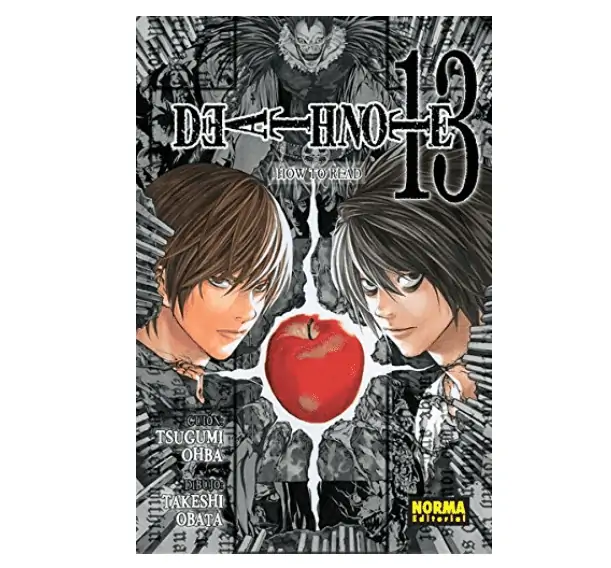
Manga Release: October 13th, 2006
Pages: 215 (Japanese), 282 (English)
Shortly after the release of the 12th volume, Death Note 13: How to Read was released to explain the parts of the Death Note manga. This guide included storyline summaries, interviews, commentary, character details, designs, and Ryuk’s Human Observations journal.
How to Read had the first serialized versions of Death Note Yonkoma and the Pilot Chapter, which were previously only available in Weekly Shonen Jump.
Death Note Another Note: The Los Angeles BB Murder Cases
Book Release: October 13th, 2006
Pages: 176
Another Note talks about the Beyond Birthday murders that occurred in Los Angeles before the Kira case. Parts of the novel are written with the character Mello as the un-universe author.
Spoilers Below
As super-sleuth L attempts to solve the Beyond Birthday case with American FBI agents and Naomi, he finds out that “B.B.” is a former successor to L.
Mello narrates the story with the expectation that Kira and Near will read it, which is why it’s initially written like a true-crime report. But, his tone eventually changes to a novelist who is writing down the character’s thoughts and feelings. He occasionally interrupts the story to speak about himself, Wammy’s House, and how his intellect is superior to both Nears and Kiras.
Death Note: C-Kira Story
Manga Release: February 2008
Manga Original Run: Weekly Shonen Jump, February 2008
Re-release: Death Note: Short Stories, February 4, 2021
Chapters: 1, 44 pages
The C-Kira Story (or chapter 109) is a one-shot chapter that acts as an epilog for the manga.
Spoilers Below
Three years after the Kira case, a new Kira emerges. After bribing the Shinigami King with apples from the human world, she receives the Death Note. She begins murdering elderly people to “relieve them of their pain.” Near doesn’t react right away and goes into an L flashback.
In this flashback, L admits that he figures out cases as a hobby and not for justice. Near says he has come to admire L and declares publicly that he won’t be looking into the C-Kira (or Cheap Kira) case. C-Kira then writes their own name in the Death Note out of shame.
It’s heavily speculated that this chapter wasn’t just made to act as an epilogue but also to call attention to the real-life copycat killers that used Death Note as a “reason” to commit crimes.
Death Note: a-Kira Story
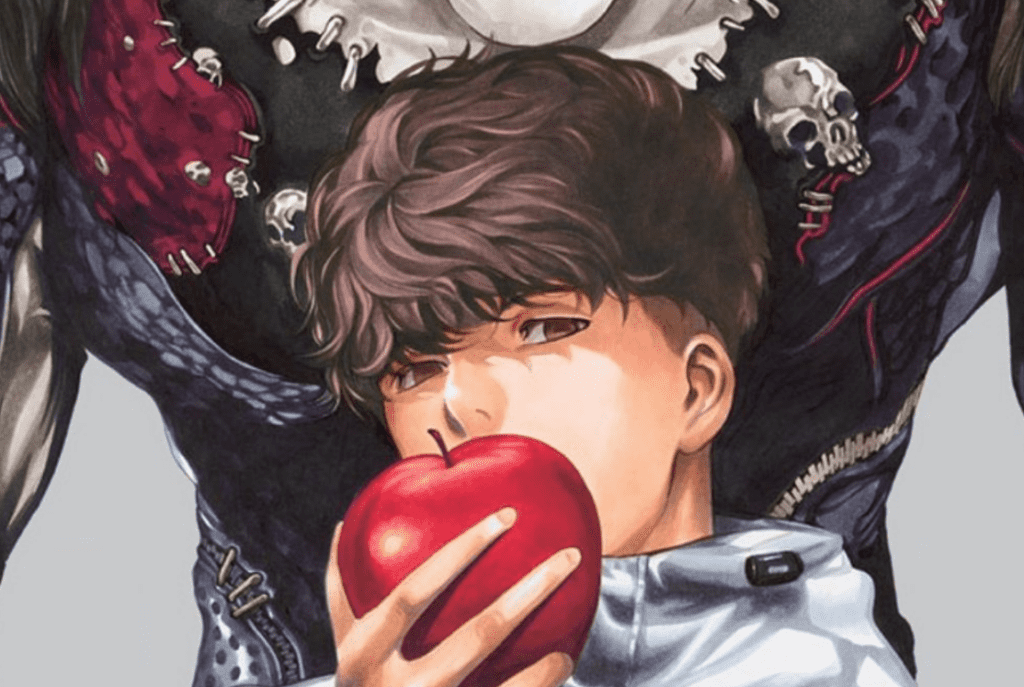
Manga Release: February 4, 2020
Manga Original Run: Weekly Shonen Jump, February 4, 2020
Re-release: Death Note: Short Stories, February 4, 2021
Chapters: 1, 87 pages
The a-Kira Story explores what would happen if the Death Note reappeared with surveillance and the Internet in the modern world. After Death Note’s serialization ended, several critics thought a modern Kira would be caught almost instantly. The author explored if that was the case.
Spoilers Below
Ten years after the Kira case, Ryuk returns to earth and gives a student, Minoru Tanaka, the Death Note. Tanaka asks for Ryuk to come back in two years. When he does, Tanaka anonymously auctions off the Death Note for a fee that sets up every Japanese citizen under 60 for life. This amount is given to every Japanese citizen once they turn 18.
However, the Shinigami King thwarts both the winner of the auction (The United States of America) and Minoru Tanaka by putting in a new rule in the note. If the owner sells the Death Note, the owner dies when the money is placed in their possession. The buyer will die when the Death Note is in the buyer’s control. Both parties die at the end of the one-shot.
Death Note: Technically Canon
Besides the anime and manga, Death Note has a movie canon. However, two main entries expand on the story’s actual canon but aren’t necessary reads for fans of the series.
L: Change the World
Book Release: December 25th, 2007
Pages: 188
Movie Release: February 9th, 2008
Runtime: 129 minutes
L: Change the World (or L: change the WorLd.) is a spin-off story focusing on L after the events of the first two Death Note live-action films, Death Note and Death Note 2: The Last Name. Both films are direct adaptations of the manga and anime, which technically makes them canon.
Although the movie release of L: Change the World only exists in the movie’s canon, the book makes several changes to the story that makes it a canon novel.
Spoilers Below
L: Change the World follows L before and during the Kira case. Before L’s death, he solved several cases, including one involving a virus. In the movie, Near plays a giant role, but not as a successor to L. In the book, his role is changed to resemble his manga counterpart. The novel also reveals canonized information about L’s past and his thoughts about Light Yagami.
L FILE NO. 15
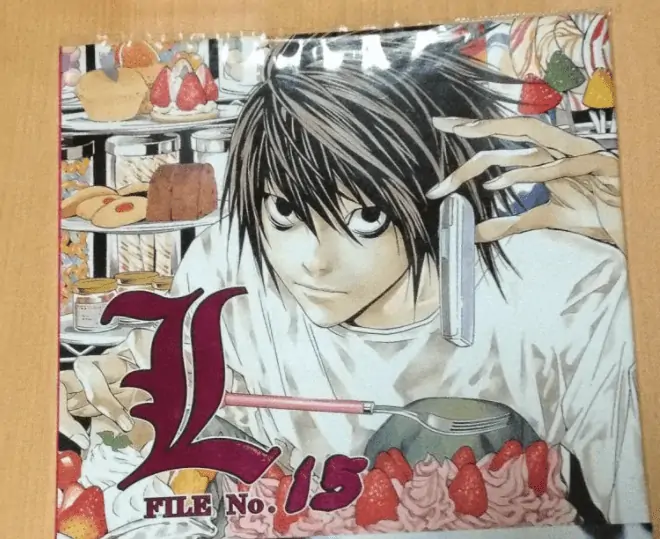
Manga Release: January 30th, 2008
Re-Release: Death Note: Short Stories, February 4, 2021 (L: Wammy’s House and One Day), May 8th, 2014 (special TokyoPop Cover)
Pages: 5 (Wammy’s House), 7 (One Day), 112 (L FILE NO.15 Total)
L: File No. 15 is a special photography book released in conjunction with L: Change the World. The book opens with an in-universe forward where Quillsh Wammy (Watari) explains that the file on L is the last one left, whereas the 14 files before it are from unknown origins.
The majority of the book contains photos taken by Mika Ninagawa of actor Kenichi Matsuyama as L. However, two manga chapters, L: The Wanny’s House and L: One Day, expand L’s story and his relationship with his friend and confidant, Watari.
The book’s only other point of interest is a list of sweets (drafted by L, rated from best to worst) and Quillsh Wammy’s journal, which logs events during and after the Kira investigation.
FAQs
Question: Is the Death Note manga over?
Answer: Yes, the Death Note manga is over. Although the authors sometimes make side stories for the series, the main story ended in 2006. A few adaptations or re-releases were made to keep the story and its themes alive. Some notable examples are the Relight OVAs, which condensed the original manga story, and the Netflix movie due to its infamy.
Question: Is Death Note based on a true story?
Answer: Maybe. The Death Note (死亡筆記) is said to be China’s oldest “book of the dead.” It contained rules and spells of the afterlife if your name was recorded in it. The exact origin of the book isn’t clear, but it’s likely the Yellow Emperor (circa 3,000 B.C.) made it to enforce his new imperial system. However, the book might have been a superstition as there’s so little evidence of it. At the same time, this evidence could have been lost during China’s Cultural Revolution.
Question: Is Death Note banned?
Answer: Death Note and its story has been a part of several controversies. When Death Note was released outside of Japan, a new wave of copycat crimes emerged, which led to China banning the manga entirely. However, only one known murder has any indirect connection to the series. The other crimes involved students creating mock Death Notes that included manifestos.
Conclusion
Death Note is an incredible series with several intelligent characters who fight without using swords or magic, like with other Shonen. Instead, Light and L (and eventually, Near) fight each other with their own intellect. Death Note proves you don’t need fists to tell an engaging story.
